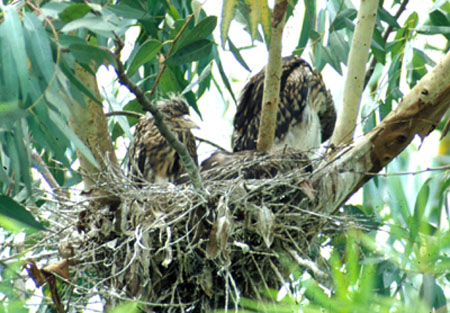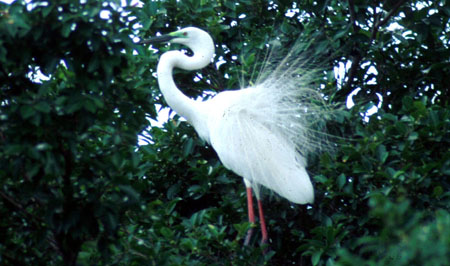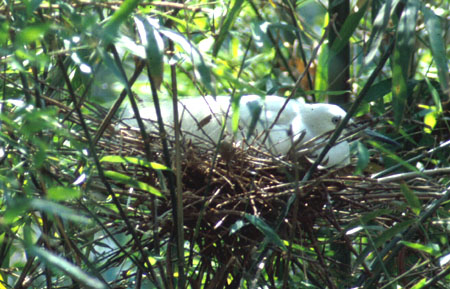

 |
 |
Vertebrates
Nesting population of egrets and herons in 2002 – preliminary results
by Captain Wong
In the 2002 breeding season, there was a total of 972 nests of egrets and herons in 19 egretries, including Great Egrets (Egretta alba, 112 nests), Little Egrets (Egretta garzetta, 269 nests), Cattle Egrets (Bubulcus ibis, 79 nests), Black-crowned Night Herons (Nycticorax nycticorax, 250 nests) and Chinese Pond Herons (Ardeola bacchus, 262 nests). Egretries at To Kau Wan on Lantau, and Che Ha, Shek Kong were first reported (a new one at Tai Tong, Yuen Long was found in the very late breeding season and it is not considered due to the late discovery date and incomplete count), while the one at Shui Mei was abandoned. Relocation of nesting sites at Pak Nai and the Stonecutters was noted. A Chau (301 nests) was the largest egretry in this breeding season, while Tai O was the smallest (11 nests). Little Egret, Black-crowned Night Heron and Chinese Pond Heron were the three most abundant breeding species in Hong Kong, while Cattle Egret was the least abundant. In the Deep Bay area, a total of 289 nests was recorded. Little Egret (135 nests) was the most abundant breeding species there, while the nesting population of Black-crowned Night Herons declined dramatically.
In general, a 16% increase in nest numbers in Hong Kong was found between 2001 and 2002. This increase may be explained by the warm winter temperature between January and April 2002. Such warm temperature may enhance the recruitment of aquatic prey. Therefore, a higher prey availability may result and this could encourage more ardeids to breed in this year (Fig. 1, 2 and 3).
 |
| Fig.1 Three Night Heron chicks probably 3 weeks old at Mai Po village. |
 |
| Fig. 2. A nesting Great Egret at Mai Po village. |
 |
| Fig. 3. A nesting Little Egret at Mai Po village. |
|
|
P.12-13 |
|
Porcupine! |
 Copyright © 2000 |